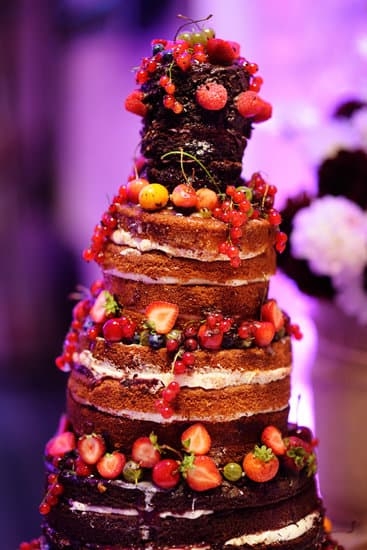Sugarpaste, also known as fondant, is a versatile and essential ingredient in the world of cake decorating. This smooth and pliable sugar dough is used to cover cakes, create intricate designs, and add a flawless finish to baked creations. It has become a favorite among bakers and decorators for its ability to transform simple cakes into works of art. In this article, we will delve into the origins, ingredients, benefits, and creative uses of sugarpaste for cake decorating.
The history of sugarpaste traces back to ancient times when it was primarily used for medicinal purposes before making its way into the realm of confectionery. Over the years, sugarpaste has evolved into a popular choice among professional bakers and home enthusiasts alike. Its malleability and versatility have made it a go-to option for those looking to elevate their cakes with intricate designs and decorations.
Comprising mainly sugar, water, gelatin or agar agar, glucose syrup, and glycerin, sugarpaste offers a pliable consistency that can be easily rolled out and molded. Each ingredient plays a crucial role in giving sugarpaste its stretchable texture while ensuring it remains firm enough to hold its shape once applied to a cake. Understanding these components is key to successfully working with sugarpaste in cake decoration endeavors.
History of Sugarpaste
Sugarpaste, also known as fondant, is a versatile and popular medium used in cake decorating to create smooth, flawless finishes on cakes and other confectionery creations. But have you ever wondered about the history of this magical substance? The use of sugarpaste can be traced back centuries, with its origins dating back to medieval times in Europe. Initially, it was used as a sweetener for desserts but eventually evolved into a decorative tool for bakers and pastry chefs.
The evolution of sugarpaste continued through the centuries, with advancements in ingredient availability and techniques contributing to its widespread popularity. In the 16th century, sugarpaste was predominantly used by royal bakers to adorn extravagant cakes for special occasions and celebrations. As sugar became more accessible and affordable, sugarpaste made its way into domestic kitchens, allowing home bakers to experiment with creative designs and decorations.
In the modern era, sugarpaste has become a staple in cake decorating around the world. With the rise of specialty baking shops and online tutorials, more people than ever are experimenting with this versatile medium to create stunning edible art pieces. The history of sugarpaste showcases how a simple sweetener has transformed into an essential tool for both professional bakers and hobbyists alike in the exciting world of cake decorating.
Ingredients in Sugarpaste
Sugarpaste, also known as fondant, is a versatile and popular ingredient in the world of cake decorating. It is a pliable sugar dough that can be rolled out and draped over cakes to create a smooth finish. One of the key components in sugarpaste is confectioner’s sugar, also known as icing sugar or powdered sugar. This fine sugar is what gives sugarpaste its sweetness and smooth texture.
In addition to confectioner’s sugar, sugarpaste typically contains gelatin or agar as a binding agent. This ingredient helps give the sugarpaste its elasticity and allows it to be molded into various shapes without cracking or tearing. Another essential component in sugarpaste is water or glucose syrup, which is used to soften the mixture and make it easier to work with.
Some recipes for sugarpaste may also include glycerin, corn syrup, or cream of tartar to enhance the texture and overall pliability of the dough. These additives help maintain the moisture content of the sugarpaste and prevent it from becoming too dry or brittle while decorating a cake. By understanding the different ingredients in sugarpaste and their specific roles, decorators can achieve beautiful and professional-looking results when working with this versatile medium.
| Key Ingredients | Role |
|---|---|
| Confectioner’s Sugar (Icing Sugar) | Provides sweetness and smooth texture |
| Gelatin or Agar | Acts as a binding agent for elasticity |
| Water or Glucose Syrup | Softens the mixture for ease of molding |
Different Names for Sugarpaste
Sugarpaste, also commonly known as fondant or rolled fondant, is a versatile and popular ingredient used in cake decorating. While it may go by different names in various regions or cultures, the purpose remains the same – to create beautifully decorated cakes with a smooth and flawless finish. Let’s explore some of the different names that sugarpaste goes by around the world:
- Fondant: In many English-speaking countries such as the United States and Canada, sugarpaste is often referred to as fondant. It is a pliable icing that can be rolled out and draped over cakes for a clean and polished look.
- Rolled Fondant: This term is often used interchangeably with fondant and refers to the process of rolling out the sugarpaste to cover cakes or create intricate decorations.
- Pasta di Zucchero: In Italian, sugarpaste is commonly known as pasta di zucchero, which translates to “sugar paste.” It is widely used in Italy for cake decorating purposes.
While these are just a few examples of the names used for sugarpaste in different regions, it showcases the widespread use and popularity of this versatile cake decorating medium. Whether you call it fondant, rolled fondant, or pasta di zucchero, the end goal is always to create stunning edible art on cakes.
In addition to these common names for sugarpaste, there may be regional variations or dialect-specific terms used to describe this cake decorating essential. No matter what it’s called, the importance of sugarpaste in achieving professional-looking cakes cannot be overstated.
Its pliability, versatility, and ability to hold intricate designs make it a favored choice among bakers and decorators worldwide. Next time you’re exploring cake decorating techniques from different cultures, keep an eye out for how they refer to sugarpaste – you might discover new insights into this fundamental ingredient.
Benefits of Sugarpaste
Sugarpaste, also known as fondant, is a versatile and popular choice for cake decorating. Its pliability and smooth finish make it ideal for creating intricate designs and decorations on cakes. One of the main advantages of using sugarpaste in cake decorating is its ability to provide a flawless, professional appearance to cakes. Unlike buttercream icing, which can be challenging to work with for detailed designs, sugarpaste can be rolled out into thin sheets and easily molded into various shapes.
Another benefit of sugarpaste is its versatility in color options. With a simple addition of food coloring, sugarpaste can be customized to match any color scheme or theme for a specific event or celebration. This makes it perfect for creating themed cakes for birthdays, weddings, holidays, and other special occasions. Additionally, sugarpaste can also be used to create 3D decorations such as flowers, figurines, and geometric shapes that would be difficult to achieve with other types of frosting.
When it comes to taste preference, sugarpaste is often favored by individuals who prefer a less sweet option compared to traditional buttercream frosting. While sugarpaste does have a sweet flavor due to its high sugar content, it is not as overpowering as some buttercreams can be.
This allows the focus to remain on the overall design and decoration of the cake rather than the sweetness of the frosting itself. Overall, the benefits of using sugarpaste in cake decorating lie in its ease of use, versatility in design capabilities, and variety of color options.
| Advantages | Details |
|---|---|
| Professional Appearance | Sugarpaste provides a flawless finish for cakes with intricate designs. |
| Versatility in Color Options | Easily customizable with food coloring to match any color scheme or theme. |
| Less Sweet Flavor | Preferred by those who want a sweet taste without being overly sugary like buttercream. |
How to Make Sugarpaste
Ingredients and Tools Needed
To make your own sugarpaste at home, you will need a few key ingredients and tools. The main components for sugarpaste include powdered sugar, gelatin, glycerin, water, and flavoring. You will also need a stand mixer or a sturdy mixing bowl with a wooden spoon, a pot for heating the mixture, and some cornstarch for dusting.
Step-by-Step Instructions
- Start by blooming the gelatin in water according to package instructions.
- In a pot, combine powdered sugar and bloomed gelatin mixture over low heat until the ingredients are well mixed.
- Add glycerin and any desired flavorings to enhance the taste of your sugarpaste.
- Once the mixture reaches a dough-like consistency, remove it from heat and let it cool slightly before kneading it on a clean surface dusted with cornstarch.
- Continue kneading until the sugarpaste is smooth and pliable. If it’s too sticky, add more powdered sugar; if it’s too dry, add more glycerin or water in small amounts.
Tips for Success
When making sugarpaste at home, it’s important to work quickly but carefully to ensure the best results. Make sure to store any leftover sugarpaste in an airtight container to prevent drying out. Experiment with different flavors or colors by adding extracts or food coloring during the mixing process. With practice and patience, you can create your own custom sugarpaste for all your cake decorating needs.
Tips for Working With Sugarpaste
Storage and Preparation
When working with sugarpaste for cake decorating, it is essential to store it properly to maintain its freshness and pliability. Make sure to keep your sugarpaste in an airtight container or sealed bag when not in use to prevent it from drying out.
Before using the sugarpaste, knead it well to warm it up and make it more flexible for shaping and molding. If the sugarpaste feels too stiff, you can add a small amount of vegetable shortening or glycerin to soften it.
Rolling Out Sugarpaste
To roll out sugarpaste for covering cakes or creating decorations, dust your work surface lightly with cornstarch or powdered sugar to prevent sticking. Use a non-stick rolling pin to evenly roll out the sugarpaste into a thin, smooth sheet. If there are air bubbles trapped underneath the sugarpaste while rolling, gently lift and smooth them out with your hands or a smoothing tool.
Sculpting and Shaping
When sculpting or shaping sugarpaste for cake decorations, work quickly but carefully as the paste can dry out and harden fast once exposed to air. To create intricate designs or figurines, use small modeling tools, cutters, and molds for precise detailing. If the sugarpaste becomes too sticky during shaping, lightly dust your hands with cornstarch or powdered sugar to prevent sticking. Additionally, you can use edible food colors to tint the sugarpaste before molding for vibrant designs on your cakes.
Creative Uses of Sugarpaste
Sugarpaste, also known as fondant, is a versatile and popular choice for cake decorators due to its ability to be sculpted, molded, and shaped into intricate designs. Whether you are a beginner or a seasoned decorator, sugarpaste opens up a world of creative possibilities when it comes to cake decorating. Here are some unique and creative ways to use sugarpaste in your creations:
- Sculpting 3D Figures: Sugarpaste can be easily molded and sculpted into intricate 3D figures such as flowers, animals, or even characters.
- Embossing Patterns: Use textured rolling pins or molds to create beautiful embossed patterns on your sugarpaste for added detail and elegance.
- Intricate Cut-Out Designs: Utilize cookie cutters or specialized cutters to create detailed shapes and designs out of sugarpaste to embellish your cakes with precision.
In addition to these techniques, sugarpaste can also be used in more unconventional ways to elevate your cake decorating game. Consider trying out these creative uses:
- Marbling Effect: Blend different colors of sugarpaste together to create a marbled effect for a unique and eye-catching design.
- Textured Backgrounds: Use tools like textured mats or stencils to add interesting textures as backgrounds for your decorations made from sugarpaste.
- Mix Media Decorations: Combine sugarpaste with other edible art mediums like edible paints, food color powders, or edible glitter for a multi-dimensional and dynamic look.
With some imagination and experimentation, you can transform simple cakes into stunning edible art pieces using the versatility of sugarpaste. The only limit is your creativity when it comes to exploring the endless possibilities that sugarpaste offers in the realm of cake decorating. Let your artistic vision guide you as you incorporate these unique uses of sugarpaste into your next masterpiece.
Conclusion
In conclusion, sugarpaste is a versatile and essential ingredient in the art of cake decorating. Throughout history, sugarpaste has evolved from a simple mixture of sugar and water to a sophisticated component that allows cake artists to create intricate designs and masterpieces. The key ingredients in sugarpaste, such as sugar, water, gum tragacanth or tylose powder, provide the necessary flexibility and durability for shaping and decorating cakes.
Understanding the different names for sugarpaste across various cultures highlights its global appeal and widespread use in the baking industry. Whether it’s called fondant, rolled fondant, or ready-to-roll icing, the essence remains the same – a pliable medium that allows for endless creativity when it comes to decorating cakes. The benefits of using sugarpaste are substantial, including its smooth finish, ability to hold intricate details, and long shelf life compared to other alternatives.
For those looking to venture into homemade cake decorating, knowing how to make sugarpaste at home can be a rewarding experience. With just a few simple ingredients and some patience, you can create your own customizable sugarpaste for all your cake decorating needs.
Additionally, mastering tips for working with sugarpaste and exploring creative uses can elevate your skills as a cake artist and transform your creations into stunning edible works of art. Ultimately, understanding what is sugarpaste for cake decorating opens up a world of possibilities for creating visually appealing and delectable treats that are sure to impress any audience.
Frequently Asked Questions
What Is the Sugar Paste Used to Decorate Cakes?
Sugar paste, also known as gum paste or rolled fondant, is a versatile and pliable icing that is commonly used to decorate cakes. It can be rolled out thinly and then molded into various shapes, textures, and designs to enhance the appearance of the cake.
Is Sugarpaste Same as Fondant?
Sugarpaste and fondant are often used interchangeably, but they are not exactly the same. Fondant is generally smoother and more elastic than sugarpaste, making it easier to cover cakes with a flawless finish. Sugarpaste, on the other hand, tends to have a firmer texture and is better suited for creating intricate decorations.
What Is the Use of Sugarpaste?
The primary use of sugarpaste in cake decorating is to cover cakes with a smooth and seamless finish. It allows decorators to achieve clean lines, sharp edges, and flawless surfaces on their cake creations.
Additionally, sugarpaste can be colored, molded, cut into shapes, and used to create an endless array of decorations such as flowers, figurines, ribbons, and more. Its versatility makes it a favorite among professional cake decorators and home bakers alike.

Welcome to our cake decorating blog! My name is Destiny Flores, and I am the proud owner of a cake decorating business named Cake Karma. Our mission is to provide delicious, beautiful cakes for all occasions. We specialize in creating custom cakes that are tailored specifically to each customer’s individual needs and tastes.





